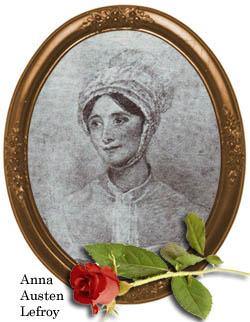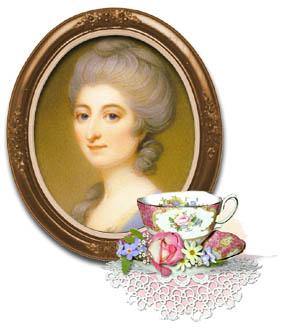Reverend Brook Edward Bridges and the Bridges of Goodnestone Park
We were agreeably surprised by Edward Bridges' company... He had been, strange to tell, too late for the cricket match, too late at least to play himself, and, not being asked to dine with the players, came home. It is impossible to do justice to the hospitality of his attentions towards me; he made a point of ordering toasted cheese for supper entirely on my account. Jane Austen to Cassandra 27 August, 1805
 Reverend Brook Edward Bridges was born in 1779, the son of Sir Brook William Bridges, 3rd Bt. and Fanny Fowler. He was one of thirteen children born into a family where all of the sons were named Brook (Brook, Brook William, Brook Henry, Brook Edward, Brook George, etc.) With so many younger sons in one family, it is not surprising that so many made the church their profession As a clergyman, Bridges hade lifetime holdings at Wingham, in Kent and the vicarage at Lenham as well as serving in other parishes, including his home church in Goodnestone. In 1809, he married Harriot Foote, with whom he had several children, one of whom became the 8th and last Baronet, Reverend Sir George Talbot Bridges (b. 10 May 1818, d. 27 Nov 1899). He travelled often between Ramsgate in Lenham due to his wife's illness and need for sea air, often stopping at Goodnestone or Godmersham to spend the night. Ironically, hie wife outlived him by nearly 40 years, dying in 1864. Rev. Bridges died in Wingham in 1825.
Reverend Brook Edward Bridges was born in 1779, the son of Sir Brook William Bridges, 3rd Bt. and Fanny Fowler. He was one of thirteen children born into a family where all of the sons were named Brook (Brook, Brook William, Brook Henry, Brook Edward, Brook George, etc.) With so many younger sons in one family, it is not surprising that so many made the church their profession As a clergyman, Bridges hade lifetime holdings at Wingham, in Kent and the vicarage at Lenham as well as serving in other parishes, including his home church in Goodnestone. In 1809, he married Harriot Foote, with whom he had several children, one of whom became the 8th and last Baronet, Reverend Sir George Talbot Bridges (b. 10 May 1818, d. 27 Nov 1899). He travelled often between Ramsgate in Lenham due to his wife's illness and need for sea air, often stopping at Goodnestone or Godmersham to spend the night. Ironically, hie wife outlived him by nearly 40 years, dying in 1864. Rev. Bridges died in Wingham in 1825.

Jane Austen was often in the company of the Bridges family at their home, Goodnestone Park, in Kent, after the marriage of her brother, Edward Austen, to their daughter, Elizabeth. In fact, that young couple spent the first years of their marriage living in Rowling House on the Goodnestone estate before inheriting Godmersham, located only a few miles away. Both Jane and Cassandra were often to be found visiting their brother and his increasing family (which eventually included eleven children) and it is no doubt here, that she first experienced some of the more socially elevated company that she would later write about. Indeed, she began First Impressions, the novel that would eventually become Pride and Prejudice, after a visit to the Goodnestone in 1796.
Edward Bridges, as he was known in the family, is mentioned several times in Jane Austen's letters (as are many other members of the Bridges family) always in high terms as a dear friend fond of providing the the author with a variety of amusements and even once as having offered an invitation that she was forced to decline. Without an idea of what that invitation might have included, there is no reason to suspect a romantic alliance between himself and Jane. But then again, there is no reason not to, either. She writes of him with fondness and he clearly enjoyed pleasing her. News of his engagement in 1808 (after his "invitation" that same year) took her by surprise:
Your news of Edward Bridges was quite news, for I have had no letter from Wrotham. I wish him happy with all my heart, and hope his choice may turn out according to his own expectations, and beyond those of his family; and I dare say it will. Marriage is a great improver, and in a similar situation Harriet may be as amiable as Eleanor. As to money, that will come, you may be sure, because they cannot do without it. When you see him again, pray give him our congratulations and best wishes. This match will certainly set John and Lucy going.Once the match was made, however, she does not appear to have approved of his wife, as these letters from her stay at Godmersham in the fall of 1813 show:
In this House there is a constant succession of small events, somebody is always going or coming; this morng we had Edwd Bridges unexpectedly to breakfast with us in his way from Ramsgate where is his wife, to Lenham, where is his Church-- & tomorrow he dines & sleeps here on his return.-- They have been the summer at Ramsgate, for her health, she is a poor Honey-- the sort of woman who gives me the idea of being determined never to be well--& who likes her spasms & nervousness & the consequence they give her, better than anything else....And later during the same stay:
We have had another of Edward Bridges' Sunday visits. I think the pleasantest part of his married life must be the dinners, and breakfasts, and luncheons, and billiards that he gets in this way at G[odmersham]. Poor wretch! he is quite the dregs of the family as to luck. Jane Austen to Cassandra October 28, 1813
Screenwriters are often tempted to embellish known facts in order to add entertainment value and progress their plot. Gwyneth Hughes, is no exception and her film, Miss Austen Regrets, provides us with a portrait of Austen's relationship with Edward Bridges as a refused but regretted suitor. Since we will never know what was contained in the letters Cassandra burned, it is entertaining to speculate as to "what might have been". Still, as Catherine Morland once learned, conjecture can be entertaining, but the truth is often much more mundane.
The Bridges Baronetcy and Goodnestone Estate
The Bridges Baronetcy, of Goodnestone in the County of Kent, was created in the Baronetage of Great Britain on 19 April 1718 for Brook Bridges. His grandson, the third Baronet, represented Kent in the House of Commons. In 1842 his grandson, the fifth Baronet, unsuccessfully claimed the ancient barony of FitzWalter (which had been in abeyance since 1756) as a descendant of Mary, brother of the seventeenth Baron FitzWalter. He later sat as a Member of Parliament for Kent East. In 1868 he was created Baron FitzWalter, of Woodham Walter in the County of Essex, in the Peerage of the United Kingdom. However, the peerage became extinct on his death while he was succeeded in the baronetcy by his younger brother, the sixth Baronet. On his death the title passed to his first cousin, the seventh Baronet. He was the son of Reverend Brook Henry Bridges, third son of the third Baronet.
When he died this line of the family also failed and the title was passed on to his first cousin, the eighth Baronet. He was the son of Reverend Brook Edward Bridges, fourth son of the third Baronet. He never married and on his death in 1899 the baronetcy became extinct. The seat of the Bridges family was Goodneston Park in Kent. The house was built in 1704 by the first Bridges Baronet. After the death of the last Baronet in 1899 the house came into the Plumptre family through the marriage of Eleanor Bridges, daughter of the fourth Bridges Baronet, to Reverend Henry Western Plumptre. In 1924 the abeyance of the barony of FitzWalter was terminated in favour of the latter's son, John Bridges Plumptre.
Sources: Jane Austen's Letters, edited by Dierdre Le Faye, The Peerage, and Wikipedia. Further historical information about the lifestyle of the Bridges Family and Elizabeth Bridges-Austen-Knight can be found at the Jane Austen information Page



Leave a comment
This site is protected by hCaptcha and the hCaptcha Privacy Policy and Terms of Service apply.